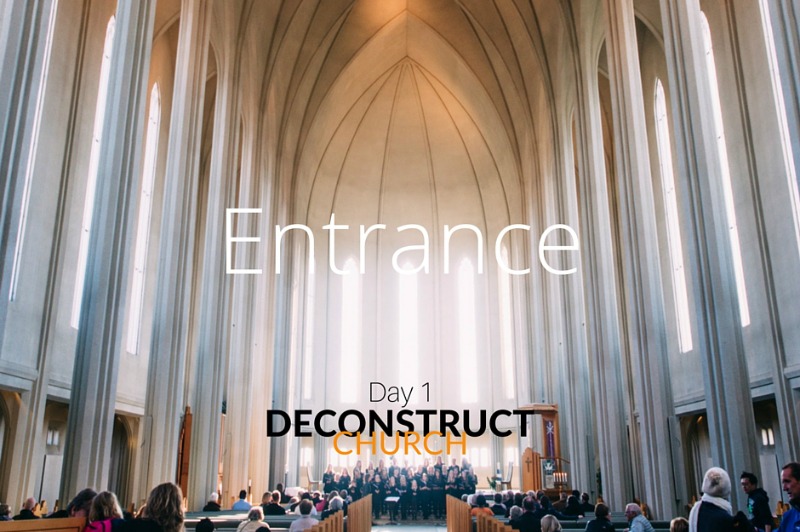How do we enter into church? The building, the people, the concept…
How do we come in? Do we walk…stroll…shimmy?
Do we slink in and sit in the back? Stride to the front? Get lost in the middle?
Do we seek out the familiar pew in the familiar space?
Is it the same community of our childhood? Of our parents?
Is it different? New? New to you?
It is funny that “church” means so many different things to people and yet we use the word “church” as if the other person knows what we mean. Go to church we say. Go.
In my tradition, we come in and often take our place, kneel in silence, and pray. This, of course isn’t mandated. People often come in casually and talk quietly. Sometimes they gather elsewhere and talk before worship begins. Often where we serve the donuts and coffee afterward.
And then the group we call the altar party comes in. A procession. And the congregation stands for the cross as it is brought into the worship space we call a nave. And we “process” in a line toward the front behind the cross. Always, it seems, to music. Usually the “processional hymn” we call it. But not always. Then we come to the front and from there, we will begin.
Maybe your tradition doesn’t have a formal entrance. Maybe the pastor walks out onto stage from the side. Or maybe it is someone else, a music leader or song leader who leads the congregation in singing three or four praise songs. And when s/he is done, the pastor makes his entrance.
How we enter says a great deal about our self-importance, it seems. Humble or grand? Do we demand to be noticed or hope to just slip in, arriving to our space in the midst of other activity?
And what does the entrance tell us about what is going to happen? Are we trying to maintain our individuality, our isolation while in public or are we gathering, being noticed and recognized? Are we preparing ourselves for intimacy?
Ask yourself these questions:
How do you enter worship? How does your congregation’s worship begin? Do they match?
What do you want to communicate about yourself and your faith?
What do you hope your congregation communicates?
What are your emotions, priorities, hopes?
What do you bring with you? What concerns and needs are on your shoulders? What could your church do about them? What would make it easier to shed your burdens? Or share the joy you feel?
What would it be to make you more comfortable and more powerful? More hopeful and more loved?
When you walk in, who are you expecting to be when you walk out?
[This is Day 1 of How to start deconstructing church. The next in the series is “Music“. To start from the beginning, read the introduction here.]


Leave a Reply